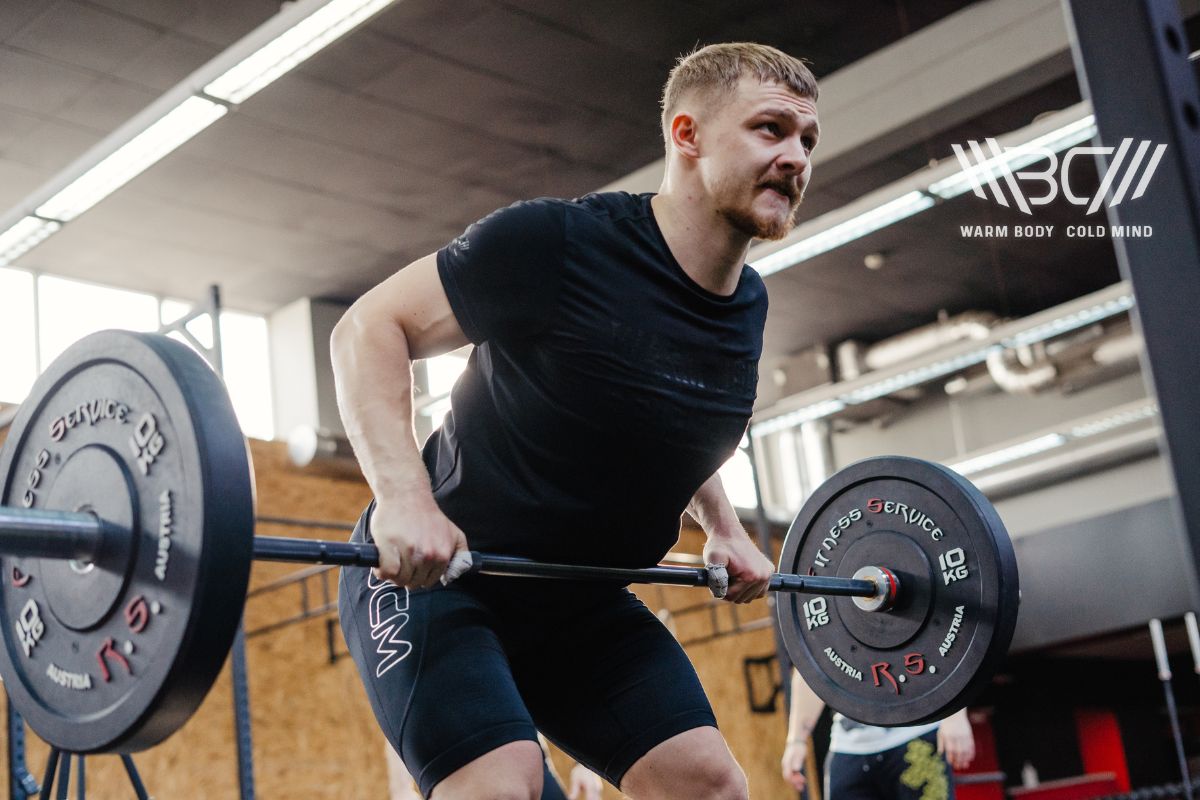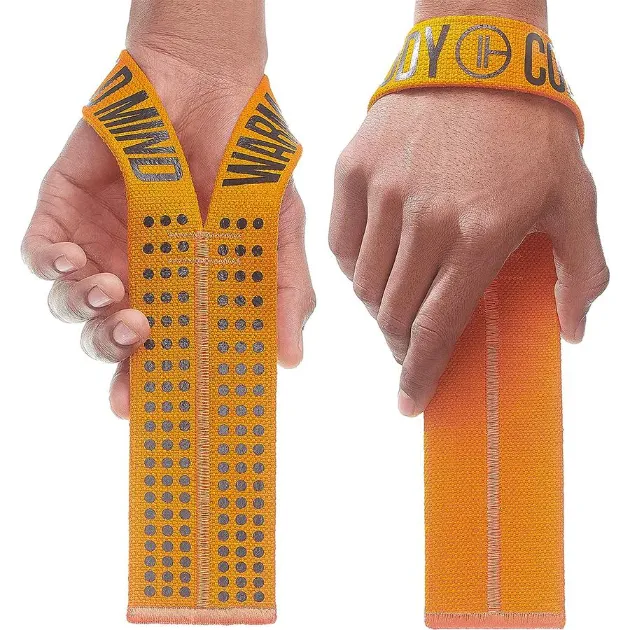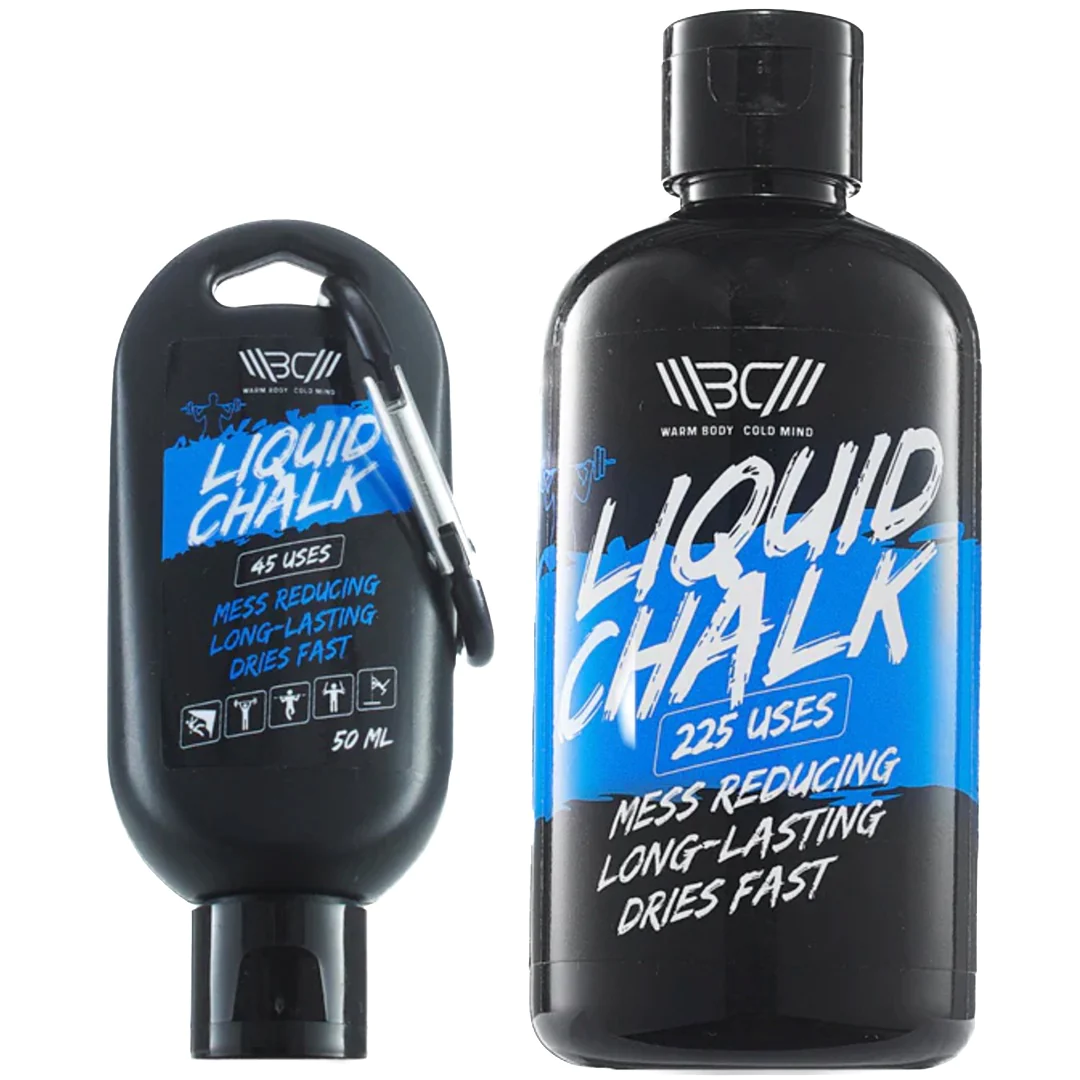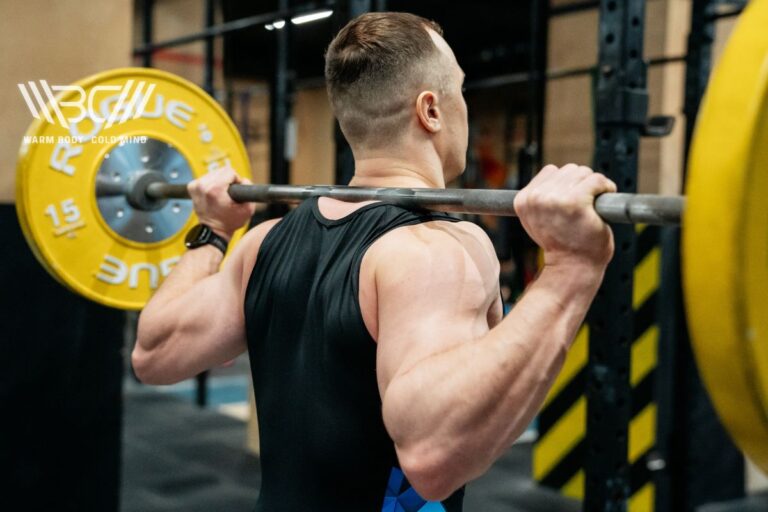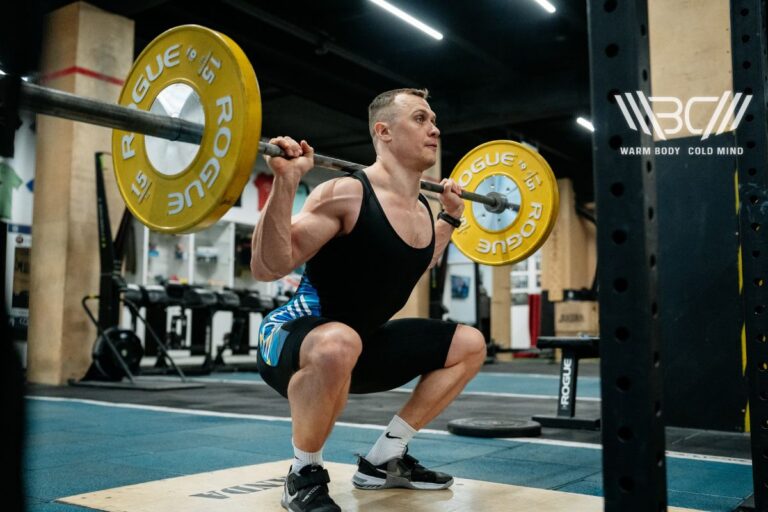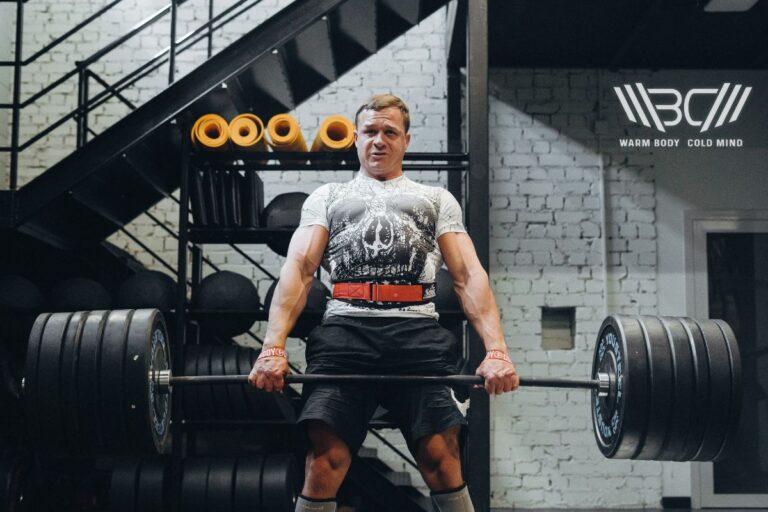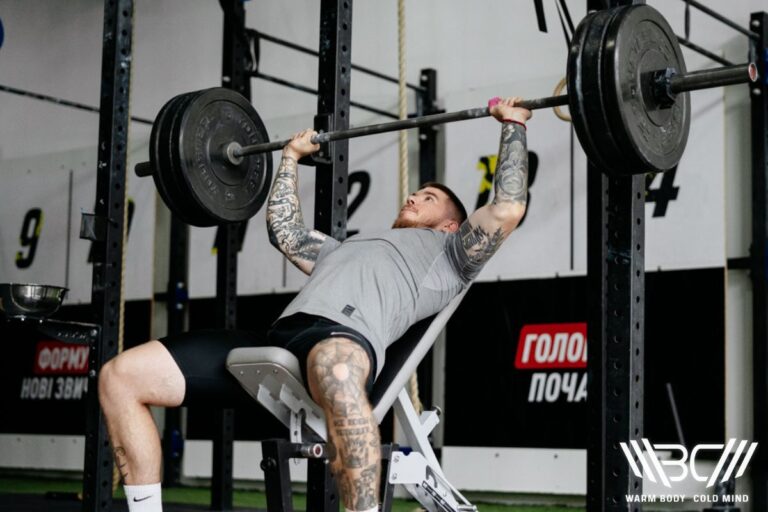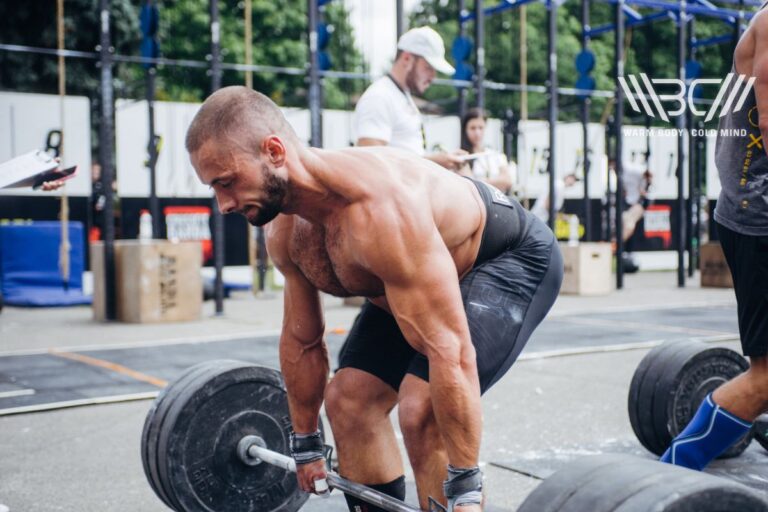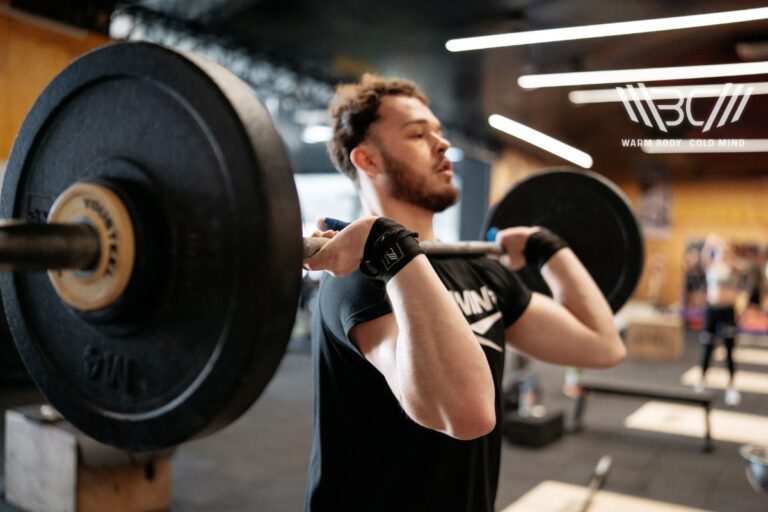5 Best Barbell Lat Workout for Max Back Gains
Reviewed by Jacek Szymanowski
Imagine a big, buff lifter. Now, imagine them turning around and, whoops! Their back isn’t as strong and as buff as you imagined. That’s a ridiculous image, sure, but when you’re building muscle, you want everything to be balanced.
For that to happen, you need a comprehensive training routine and today, we’ll focus on your back. Specifically, how to get the best-looking back ever using a barbell.
If you’re not a fan of barbells and you avoid using them, you’re missing out. There’s not a lot of equipment that’s this versatile, and there’s even less that is as effective as a barbell.
Get ready to dive deep into the best barbell lat exercises, safety tips, and expert advice on how to up your back game!
What is the barbell lat workout? – It consists of exercises that target your lats using a barbell. They help build back strength, width, and thickness by engaging your lats. Some of the most common exercises are barbell rows, pullovers, and wide-grip pull-ups.
Anatomy and Role of Lat Muscle
We won’t get too deep into this, but it’s important to understand the basics to be able to get the most out of your lat exercises with a barbell.
The latissimus dorsi, or lat, is a large, triangular muscle located on each side of the middle and lower back. It starts from the lower part of the spine (thoracic and lumbar vertebrae) and stretches up to the upper arm bone (humerus). This muscle is responsible for a lot of important movements involving the arms and shoulders.
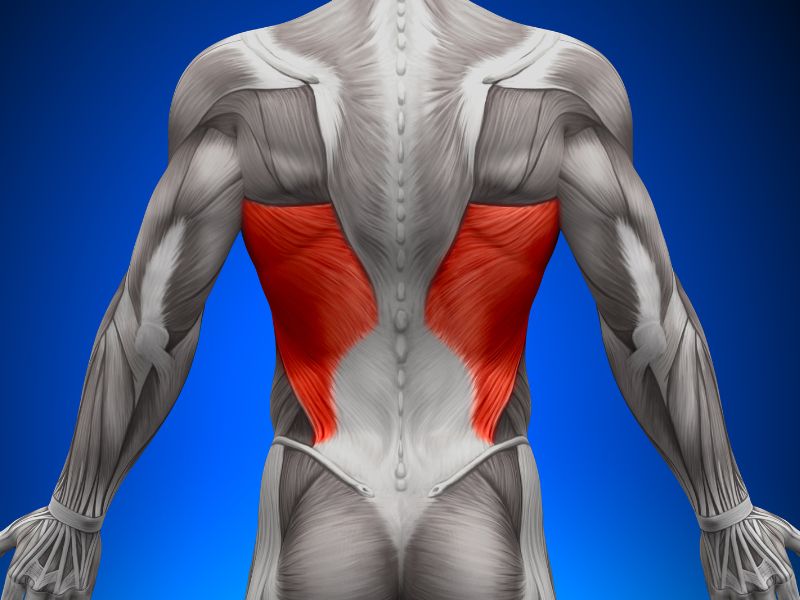
The lats’ main job is to pull the upper arms down and back toward the body, and this is known as a shoulder extension. This is a crucial movement in exercises like pull-ups, rows, and pulldowns. When you add a barbell, the lats are very engaged to stabilize and control the weight.
Strong muscles will give you a defined back, which is what we’re all after. But apart from the great look, they’ll also help with functional movements like lifting, pulling, even pushing. They also play a big role in maintaining correct posture and keeping the shoulders healthy.
Why With Barbell – Horizontal vs Vertical Pull
Make sure to understand the difference between horizontal and vertical pulls. Horizontal pulls, like barbell rows, engage your lats along with the muscles of your mid-back and biceps. This is an effective way to target your lats while improving posture and the strength of your back at the same time.
Vertical pulls, like pull-ups, target the lats in a different plane of motion. They isolate your lats more directly, so you get a greater range of motion and lat activation.
When you include both into your routine and then add a barbell, you get comprehensive training that develops and strengthens your muscles. The versatility that comes from the barbell allows you to vary the grip and positions, which can make the exercises even more effective.

Using a barbell engages stabilizing muscles, which improves overall muscle coordination and balance. And don’t forget how easily adjustable this is!
You can add or remove plates according to what’s comfortable, so you really won’t find anyone that can’t use barbells. Some people just choose not to because they’re intimidated, but if they gave them a chance, there’s no way they wouldn’t love them because what’s not to love?
5 Barbell Lat Exercises
You’re all set with the basics, so let’s get into the actual barbell lat workout!
1. Barbell Row
- Muscles worked: Lats, rhomboids, lower and middle traps, biceps, lower back
- Variations: Underhand grip barbell row, wide-grip barbell row
- Alternatives: Dumbbell row, chest-supported row, seated cable row
- Equipment: Barbell
Barbell rows will strengthen your back, improve posture, improve the strength of your grip, and overall, develop back thickness. They do a great job at engaging your lats, but they also engage rhomboids, middle and lower trapezius, biceps, and forearms.
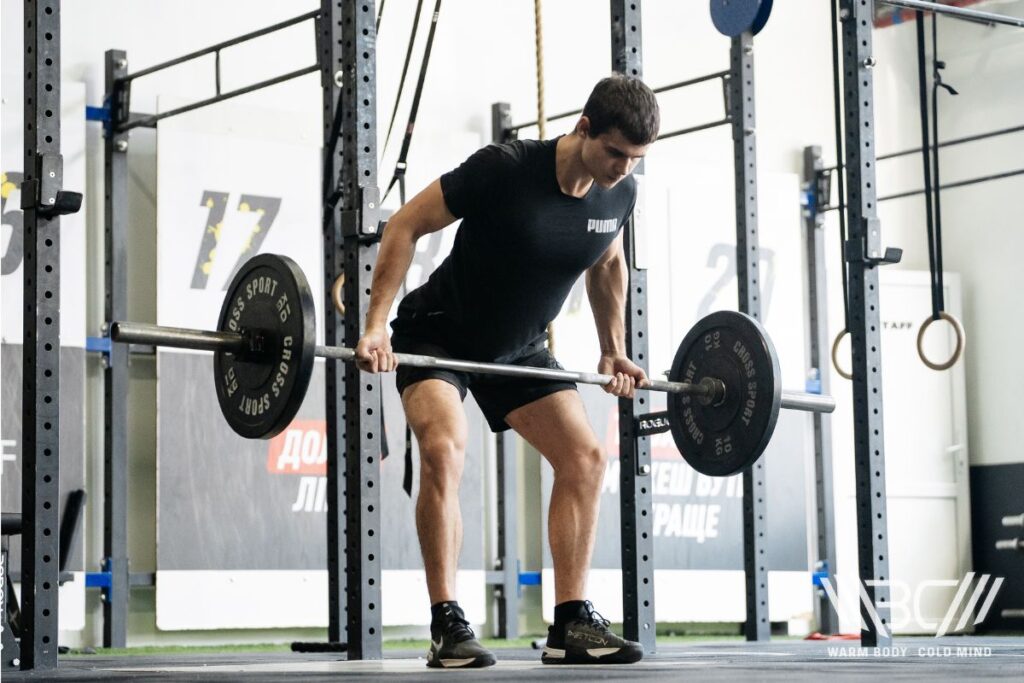
If you want to engage your biceps a bit more, you can do so with an underhand (supinated) grip. Dumbbell row is a good alternative exercise because it allows for unilateral training, so if you have any imbalances, this exercise can correct them.
Stand with your feet shoulder-width apart and hold a barbell with an overhand grip. Hinge at your hips, keep your back straight and chest up, and lower your torso until it’s almost parallel to the ground.
Then, retract your shoulder blades and pull the barbell toward your chest. Lower it back down with control.
If you struggle with the strength of your grip, try using a pair of wrist straps. They will help you grip the barbell securely and you’ll be able to focus more on the lift.

Olympic Weightlifting Straps V1
Enhance your weightlifting experience with premium Warm Body Cold Mind Olympic lifting straps.
2. T-Bar Row
- Muscles worked: Rhomboids, traps, lats, rear deltoids, biceps
- Variations: Close-grip T-bar row, wide-grip T-bar row
- Alternatives: Chest-supported T-bar row, machine row
- Equipment: T-bar row machine or landmine attachment, barbell
T-bar row will engage all the muscles barbell rows will, along with rear delts that often get overlooked. This is a great exercise that’s known for its ability to improve thickness throughout the back.
You might notice discomfort in your lower back, and if that happens, try doing a chest-supported T-bar row. It will reduce the strain and isolate your back muscles even more, plus it can allow you to lift heavier weights.
To do this exercise, place one end of the barbell in a landmine attachment or you can secure it in a corner. Straddle the barbell with your feet shoulder-width apart and bend at the hips and knees. Make sure to keep your back straight.
Grab the handles with both hands and pull the barbell towards your abs while keeping the elbows close to your body. Then, lower it back down in a controlled way.
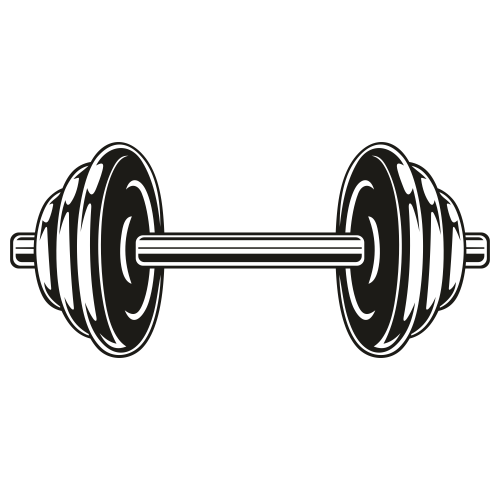
Pro Tip:
3. Pendlay Row
- Muscles worked: Lats, rhomboids, traps, biceps, lower back
- Variations: Wide-grip Pendlay row, underhand grip Pendlay row
- Alternatives: Dumbbell Pendlay row, Yates row
- Equipment: Barbell
This is an exercise that’ll do wonders for explosive pulling power. In addition to that, it will make your back stronger and thicker. Apart from the lats, it engages the rhomboids, middle and lower trapezius, rear delts, biceps, and forearms.
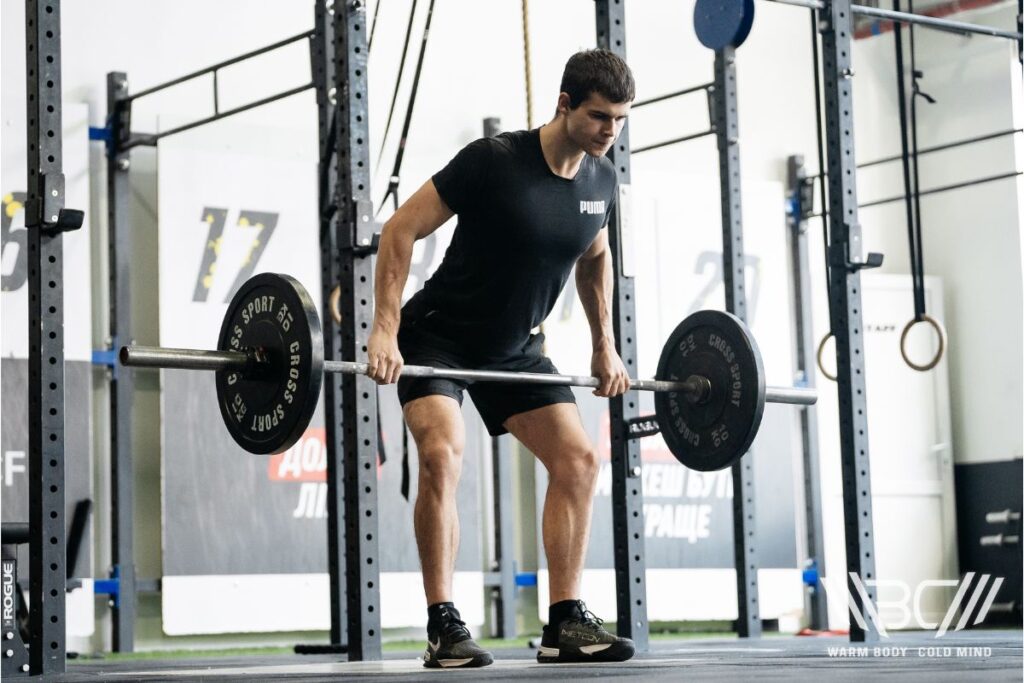
Stand with your feet shoulder-width apart, hinge at the hips, and bend your knees a little. Grasp the barbell (that’s on the ground) with an overhand grip and pull it towards your lower chest. Your back should remain straight and your elbows need to be at a 45-60 degree angle from your body.
Lower the barbell back down in a controlled way. You can use a supinated grip or vary the grip width to emphasize different muscles.
If you struggle with grip, you might want to give liquid chalk a try. It will reduce the moisture on your hands and give you a much better grip.

Maximize your grip with premium quick-drying Warm Body Cold Mind liquid chalk leaving no mess.
4. Seal Row
- Muscles worked: Middle traps, rhomboids, lats, rear delts
- Variations: Single-arm seal row, wide-grip seal row
- Alternatives: Chest-supported dumbbell row, machine row
- Equipment: Barbell, bench
Compared to traditional bent-over rows, seal rows will place no strain on your lower back, so if that’s a problem area for you, give these a chance. They’re very good at targeting your lower and middle back and they can improve your functional strength.
Seal rows are excellent at isolating the back muscles and they’ll improve scapular retraction, which is really important for posture and stability in the shoulders.
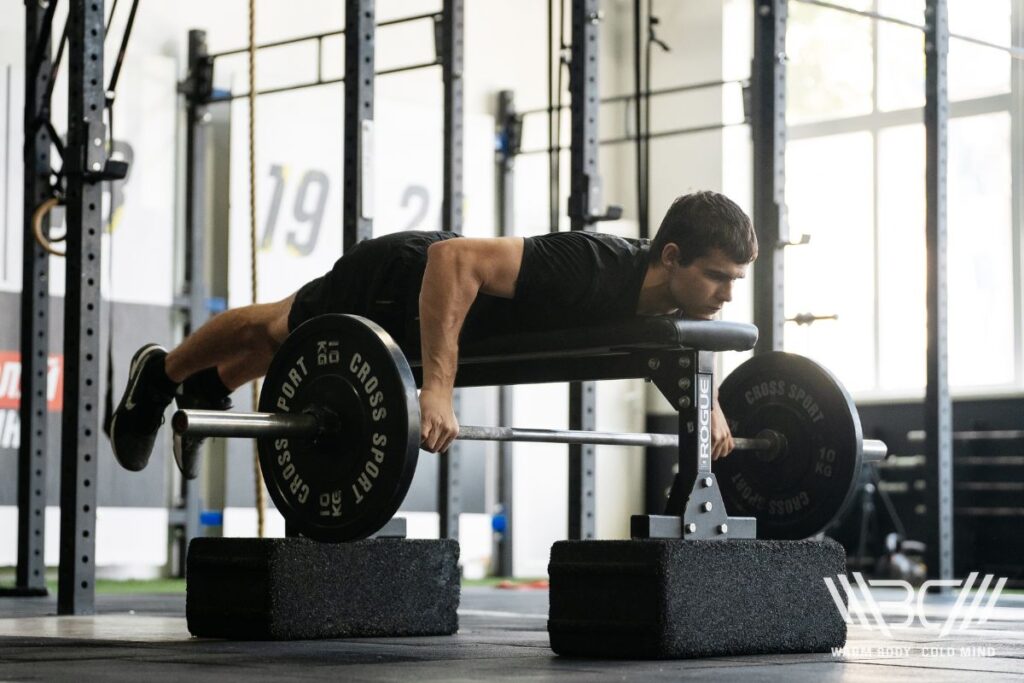
Lie down on a flat bench with your chest supported. Keep your feet flat on the ground. Grab the barbell with an overhand grip that’s a little bit wider than shoulder-width.
Pull the barbell towards your lower chest while retracting your shoulder blades at the same time. Then, lower the barbell back down.

Pro Tip:
5. Single Arm Row with Landmine
- Muscles worked: Lats, rhomboids, rear delts, biceps, stabilizer muscles
- Variations: Landmine Meadows row
- Alternatives: Dumbbell single-arm row, cable single-arm row
- Equipment: Barbell, landmine attachment
This exercise offers a different angle of pull and it challenges your stability more compared to barbell rows. One-arm dumbbell rows and single-arm cable rows are a good alternative to this.
The primary focus is on the lats, rhomboids, and trapezius, but your biceps and forearms will get some attention, too.
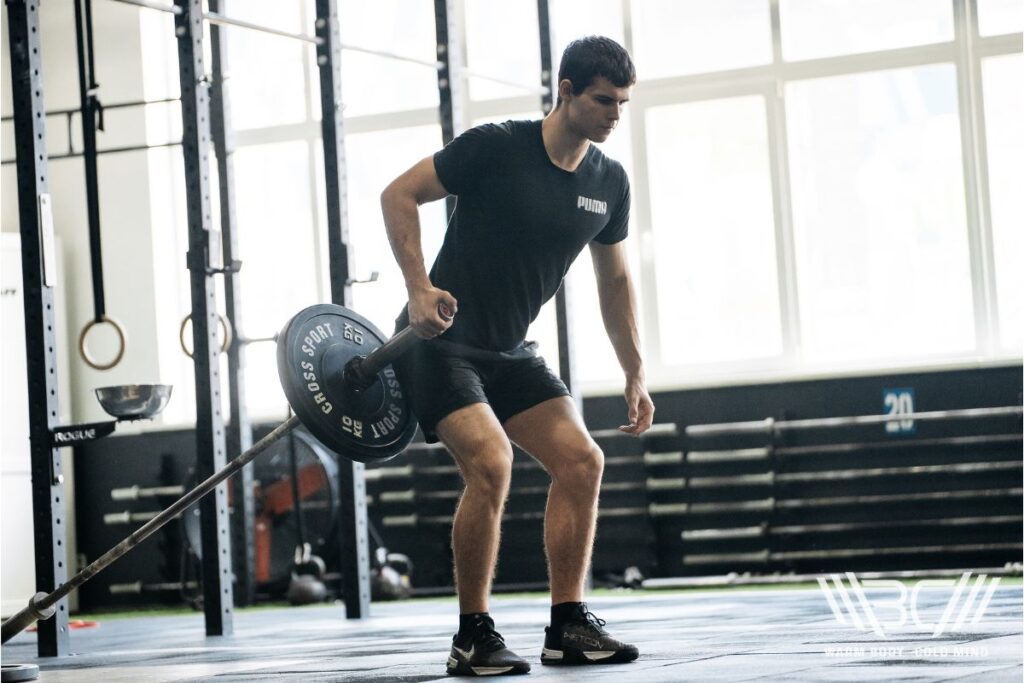
This exercise improves unilateral strength and stability, it can take care of muscle imbalances, and it engages your core. Try to have fun and experiment with different angles.
Place one end of the barbell in a landmine attachment or secure it in a corner. Stand perpendicular to the barbell and keep your feet shoulder-width apart.
Grab the end of the barbell with one hand and hinge at the hips while keeping a straight back. Pull the barbell towards your lower rib cage by retracting your shoulder blade and driving your elbow back.
Hold this for a moment, then slowly lower the barbell back to where you started from.
Subscribe!
Get useful tips, expert insights, and in-depth analysis of training programs & nutrition plans to get the most out of your performance.
How to Add Barbell Lat Exercises Into Your Routine or Workout Plan?
Doing these lat barbell exercises will make a world of difference, but they need to line up with your routine. So how to add it to your existing routine?
It will actually depend on the split you are following and how many days in a week you are exercising. For muscle building a good start is to address muscle group with around 12-20 effective sets in a week, reps close to failure, otherwise you are leaving gains on the table.
So If you follow Push/Pull/Legs split and have “only” one pull session in a week that means all should be done in one session. Higher volume in one session but followed with higher recovery time for the same muscle group. In case you are doing upper/lower 2x a week it means you can easily split total sets for 2 upper sessions.
Full body workout means you can add pull exercises in each session so the number of exercises and sets will depend on how many FBW sessions you have in your week.
Just keep in mind it’s not how much you can do. It’s how much you can do and recover from – crucial difference for muscle development.

1. Technique is King
This is not an understatement – proper technique keeps you safe from injuries and makes your workout effective. You might think this is something your trainer likes to drone on about, but technique is absolutely vital and until you master it, you shouldn’t start lifting heavy weights.
2. Total Volume
Think about what your goals are and why you want to do lat workouts because the volume needs to be aligned with your goal.
If you’re a beginner, no matter what you’re working on, what you need is to start with lower volume and increase it as you get stronger. As your muscles develop, increase the volume, and keep increasing it little by little. This one of the ways to increase something called progressive overload and it’s the foundation of progress.
Keep it challenging but manageable at all times to see results.
3. Application for Specific Goals
What are you trying to achieve? Hypertrophy, endurance, strength gains?
If you’re after defined muscles, use moderate weight that will allow you to reach muscle failure within the desired rep range. For endurance, do more reps with lighter weights. For strength and power, you want less reps (up to 6 per set) and heavy weights that challenge your strength.
4. Safety
Safety comes above all else. Good form, proper equipment, and listening to your body’s signals will make your workout effective and safe. If something is too challenging and causes too much discomfort, it’s okay to leave it and revisit it in the future, once you get stronger.
Make sure to start each workout with a warm-up to prepare your muscles and dedicate a few days to rest. Your muscles need time to recover, and there’s nothing wrong with just chilling on the couch sometimes.
Conclusion
If you want a game-changer for your fitness routine, add a barbell to it. And this goes for pretty much everything, not just barbell exercises for lats. Barbells are insanely versatile and if you take the time to learn the proper form and technique, you’ll love the results.
Which brings us to the next point – safety. Safe exercises start with the proper form, but that’s not all there is to it. Whatever your goal is, start slow and increase the intensity over time. Rest every once in a while, and, of course, stay consistent.
Your results won’t come overnight, but if you keep at it, you’ll be proud of what you’ve accomplished. And remember that this isn’t just about looking good – it’s about being disciplined, dedicated, and committed to improving your health and well-being, which is what should be your main motivation.
But let’s see what you have to say because, who knows, you might even disagree! Do you pay attention to your back and which exercises do you like the most? Do you use a barbell and if you don’t, what’s stopping you? (Let us know so we can change your mind)
Leave a comment and let’s keep the convo going!
Latting out!
References:
- Gerrit Stassen, Lukas Baulig, Ole Müller, Andrea Schaller “Attention to Progression Principles and Variables of Exercise Prescription in Workplace-Related Resistance Training Interventions: A Systematic Review of Controlled Trials,” Frontiers in Public Health, March 25, 2022, Sec. Occupational Health and Safety, Volume 10 – 2022.
- Health Promotion Board (HPB) “Prevent Injuries with Proper Form During Workouts,” Singapore University Health Center, https://www.nus.edu.sg/uhc/articles/details/prevent-injuries-with-proper-form-during-workouts (accessed May 6th, 2024)
- Hyoung-Kil Park, Min-Kyung Jung, Eunkyung Park, Chang-Young Lee, Yong-Seok Jee, Denny Eun, Jun-Youl Cha, and Jaehyun Yoo. “The effect of warm-ups with stretching on the isokinetic moments of collegiate men.” Journal of Exercise Rehabilitation 14, no. 1 (2018): 78–82.
- Mayo Clinic Staff, “Weight training: Do’s and don’ts of proper technique,” Mayo Clinic, https://www.mayoclinic.org/healthy-lifestyle/fitness/in-depth/weight-training/art-20045842 (accessed May 6th, 2024)
- Susan H. Jeno and Matthew Varacallo. “Anatomy, Back, Latissimus Dorsi.” StatPearls [Internet].
- Photos by WBCM Media team; photo by @decade3d, Canva.
Author: Sergii Putsov
PhD in Sport Science, Olympic weightlifting, Strength & Conditioning coach and fitness expert
Sergii Putsov is a professional weightlifter with over 20 years of experience and multiple national medals. He was a member of the National weightlifting team, competing in the 94 kg weight class. Sergii holds a master’s degree in Olympic & Professional Sport Training and a Ph.D. in Sport Science. After his athletic career, Sergii transitioned into coaching and is now responsible for designing training programs, writing blog articles, providing live commentary for international weightlifting competitions, and hosting sport and fitness seminars worldwide.
Reviewed by: Jacek Szymanowski
Performance architect, S&C movement specialist.
Jacek Szymanowski is a highly respected sports nutrition expert with a Master’s degree in Biotechnology. His innovative approach combines lifting and fighting strategies to help athletes optimize their performance. As a Strength and Conditioning Movement Specialist, he is dedicated to reducing injuries in athletes. His specialist training in Nutrition for Athletes equips him to provide expert advice on dietary habits and nutrition for peak performance.

